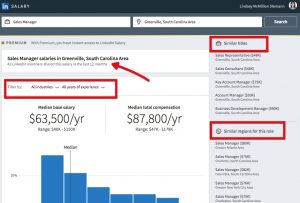No matter what your industry, product or service, the foundation of every company is built on its people. From the C-suite to the frontline team, your people are your number one asset. But as essential as that frontline team is, there’s no denying that a company’s leaders are the least replaceable. They’re the ones with the right mix of skill, experience, vision, and drive to take the helm. And yet, immortality does not rank on the list of characteristics that makes them a leader. The simple truth is that leaders move on; they retire, they resign, they pass on. Unfortunately, too few companies take this truth to heart and many fail to engage in effective succession planning.
The Necessity of Succession Planning
For publicly-held companies, succession planning is a given (although, that’s not a guarantee that it’s done well). But step into the private realm, and it’s frequently overlooked. A report from the Society for Human Resource Management cites some eye-opening statistics, including the fact that at least 40% of surveyed organizations don’t have a succession plan, and only 5% have confidence in their current succession planning processes.
Many companies turn to succession planning when it’s too late – such as when a leader unexpectedly resigns or is taken ill. This strategy resembles crisis management more than it does succession planning, so there should be little surprise if the resolution of such circumstances fails to succeed.
Truly effective succession planning is a vital business continuity process that ensures a company’s productivity, growth and competitive edge independent of any changes in leadership. Thus, a serious and proactive approach is key.
The Foundation of Effective Succession Planning
Essentially, a succession plan is a formal, written plan that aligns with the long-term strategy of an organization. It requires a genuine understanding of the complexities and nuances of the organization’s processes and procedures, and deftly integrates with other strategies such as talent acquisition, employee engagement, and professional development.
As for the content of this plan, it’s about more than simply naming replacements for key players. Instead, it should identify potential candidates to fill each key role – not only within the C-suite but also the host of direct reports, including VPs, directors, and managers.
That identification process will reveal where the gaps are in your organization. If you can’t name three viable successors for each key position, there are two potential solutions: First, shift your current recruitment strategy to focus on leadership qualities, hiring lower level employees with the objective of grooming them for future leadership. Secondly, re-evaluate your professional development programs. Any employee with an ambition for the C-suite will need coaching, mentoring, and training before they are ready to take on the role.
Key Factors in Effective Succession Planning
Before the identification process even begins, it’s vital to establish a clear profile of your current leadership positions. This includes an evaluation of what factors make current leaders successful, from their strengths and leadership competencies to their specific skills and experiences. This profile should align with the overall company strategy and positioning in the marketplace, as well as factors such as current economic conditions and disruptive industry trends.
This profile will provide a benchmark for assessment of viable candidates in the succession plan (it also helps protect against the bias that can come from a CEO hiring someone they perceive to be just like them). However, it’s important to realize that this benchmark should be revisited often (such as on an annual basis) to remain flexible and cognizant of further changes in the leadership team, the company, and the market. Furthermore, regular evaluation will help everyone – the CEO, Board members, and HR leaders – to sustain a shared vision of the succession plan, which will help expedite the process when the time comes to execute it.
On a side note, it’s also important to acknowledge that there’s rarely a candidate who will meet every requirement of your profile and will able to hit the ground running from day one as a successor. Failure to accept this notion will result in a plan that’s too inflexible, increasing the time it takes to find the “perfect” candidate and decreasing the productivity and performance of the company and its workforce. Instead, a company should work to understand how context impacts someone’s leadership abilities; in other words, how will the rest of the leadership team complement the candidate’s skills and qualities? How will this shape the transition and onboarding process, and who will be there to mentor and advise the successor?
Other Factors to Consider
Effective succession planning will look different for every company, depending upon its industry, size, history, and plans for the future. Here are a few more things to consider:
- What gaps in your workforce will occur as a result of promotion?
- How long will it take to develop a leader who is ready for an executive role?
- How will you prepare Millennials for executive leadership? It will be different than preparing Gen X, so how will you adapt to these generational differences?
- Recruiting executives for family owned businesses can be tricky. Does this apply to your company?
- Does your company foster an engaging culture that leads to strong retention rates? This will have a significant impact on executive level turnover.
- How will your company ensure open communication and feedback to help new leaders thrive?
Many of the factors we’ve discussed here assume that you’re hiring internally when building a succession plan. And while it is typically more effective to promote from within than hire external replacements, this doesn’t change the fact that your recruitment strategy should always be focused on a candidate’s leadership qualities in alignment with your overall company vision and growth strategy.
Business & Finance Articles on Business 2 Community(34)
Report Post





